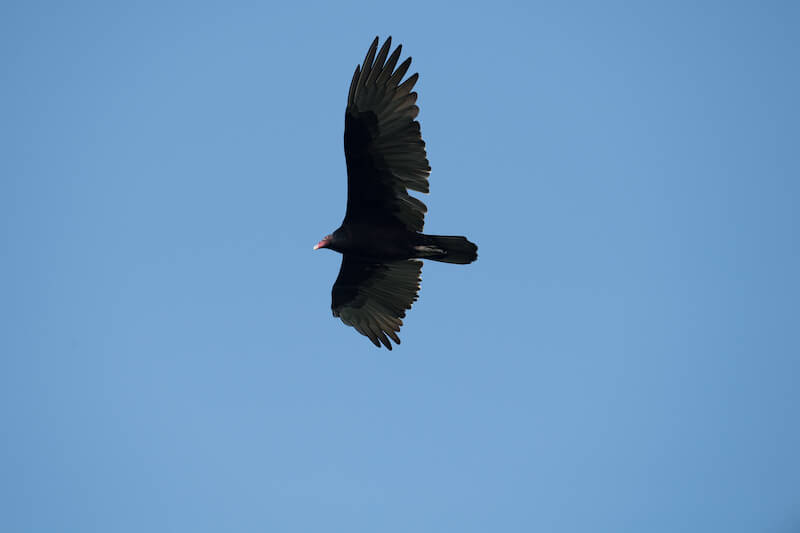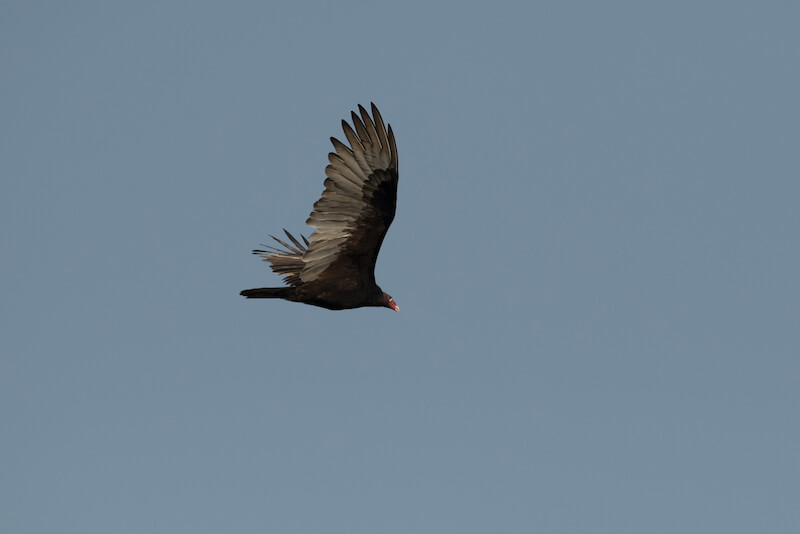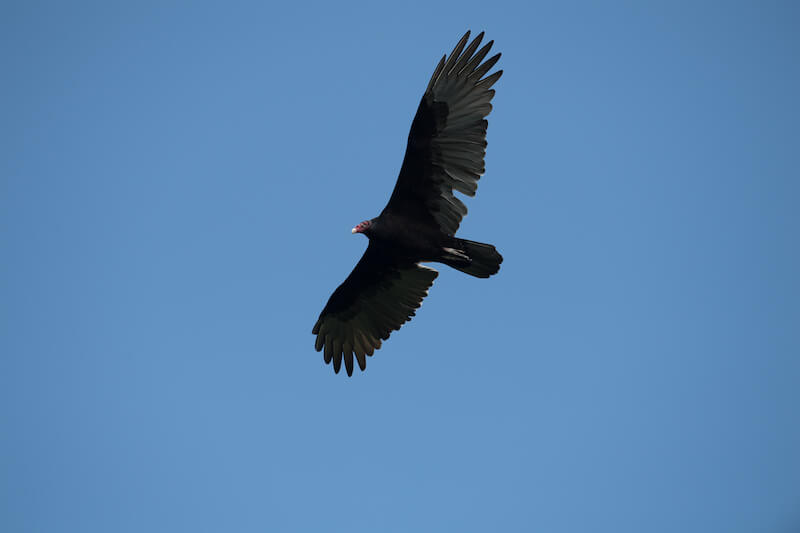Cathartes aura
Their black body contrasts with the gray flight feathers, tail, and naked bright red head. Large body with long black wings with browner black, naked bright red head, and pale bill and legs. Juveniles have and ashy-gray colored naked head. These birds ride thermals in the sky and use their extremely keen sense of smell to locate food. Feeds mainly on dead animals, preferring those that have recently died. They seek carrion by flying over open or partly wooded country, watching the ground, and watching the actions of other scavengers. They are not likely to be in a place unless something has died. They are superior scavengers, cleaning up the environment with its sharply hooked bill, and never mussing or messing a feather on their bald heads. They are essential to keep the equilibrium in the ecosystems as they prevent the spread of disease to animals. They also feed on decaying vegetable matter, insects, or fish in drying-up ponds. Little or no nest is built but on debris. The clutch is of 1 or 2 white eggs blotched brown and lavender that are incubated by both parents for up to 40 days. Vultures are found often in farm fields perching on fences next to the road. They do not have predators.
El gallinazo cabecirrojo es una ave grande con plumaje de color negro, cabeza desnuda y roja. Puede pesar hasta los 2.5 Kg. Tiene un pico corto, curvo, color marfil. Sus patas son color marfil. Se alimenta de carroña y juega un papel importante en los ecosistemas ya que previene que patógenos y enfermedades se propaguen a otros animales vivos. Vuelan usando térmicas reduciendo asi la necesidad de aletear. Localizan su presa debido a su aguda vision y extremo sentido del olfalto. Detectan el olor a larga distancia, vuelan, despedazan y comen el cuerpo en descomposición. Sin embargo, prefieren animales que hayan muerto recientemente. También pueden consumir materia vegetal en descomposición, insectos vivos o peces en lagos de poca agua. Estas aves carroñeras gozan de no tener depredadores. No pueden vocalizar - gruñen o hacen ruidos tipo silvidos. Prefieren no hacer nidos como las otras aves, lo hacen generalmente en el suelo sobre basurales. La hembra pone de 1 a 2 huevos de color blanco con manchas castañas. Ambos padres incuban los huevos hasta la oclusión durante un período de 40 días. Alimentan a sus crías por regurgitación. Se pueden observan posando en cercas en el campo.
LAM_1107
LAM_1142
LAM_1099

TURKEY VULTURE - a Superior scavenger
GUALA CABECIRROJA - Ave Carroñera



